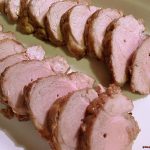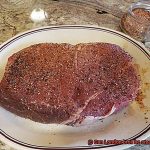Do you love biting into a juicy sausage but get worried when you see that it’s still pink? Well, fear not my friend, because in this article we’ll be exploring the question of whether sausages can be fully cooked yet still have a pink hue. Sausages are a beloved meat product worldwide, but their color has sparked debates among food enthusiasts.
Many people wonder if it’s safe to eat pink sausages or if it means that they’re undercooked and potentially harmful to consume. Sausages are typically cooked with either temperature probes or visual cues, which can sometimes leave them with a slight pink color even when they’re fully cooked. However, for sausages to be considered fully cooked and safe for consumption, their internal temperature must exceed 160°F. This ensures that any harmful bacteria like salmonella and E.coli are eliminated.
In this article, we’ll delve into the world of sausages and explore the different types of sausages, their cooking techniques, and factors that contribute to their pink hue. We’ll also discuss safety concerns surrounding consuming pink sausages, how to tell if a sausage is fully cooked, and the best ways to cook sausage without leaving it pink. So grab yourself a couple of sausages and let’s dive into finding answers to this perplexing question.
Contents
What Causes Sausage to Appear Pink?
There are several factors that can cause sausage to appear pink in color, including the type of meat used, the cooking method, and the presence of certain additives.
One factor that can contribute to the pink color of sausage is the use of nitrites or nitrates as preservatives. These additives are often used in cured meats like sausage to prevent bacterial growth and extend shelf life. During cooking, nitrites and nitrates can react with the meat proteins, creating a pink hue even when the sausage is fully cooked.
Another possible cause of pink sausage is the use of leaner cuts of meat. These cuts tend to have less fat content, resulting in a drier texture and lighter color. To improve texture and moisture retention, manufacturers may add water or other binders which can also contribute to a pink color.
The cooking method can also impact the color of sausage. When cooking sausage on a grill or smoker, the heat can cause a chemical reaction between the smoke and meat proteins, resulting in a pinkish hue. Lower temperatures or shorter cooking times may not fully denature the meat proteins, leaving some pink color behind.
It is important to note that not all pink sausage is safe to eat. To ensure safety, use a meat thermometer to check that the internal temperature has reached 160°F (71°C) for fresh pork sausage and 165°F (74°C) for poultry sausage. It’s also essential to follow food safety guidelines when handling and preparing meat products.
It’s worth mentioning that certain types of sausages may naturally have a pinkish color even when fully cooked. For example, smoked sausages may have a slightly pink hue due to the smoking process. As long as they reach the appropriate internal temperature, these sausages are safe to eat.
Is Pink Sausage Safe to Eat?
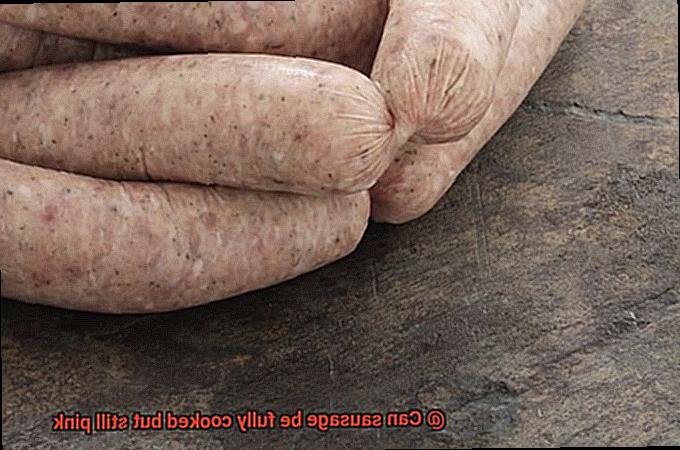
Firstly, the color of sausage is not always a reliable indicator of whether it is safe to eat. While many people assume that pink sausage is undercooked or raw, there are actually several factors that can cause the meat to retain its pink hue even when fully cooked.
One common misconception is that pink sausage may be unsafe because it could contain harmful bacteria like Salmonella or E. coli. However, these bacteria are destroyed at high temperatures, so if the sausage has been cooked to the recommended internal temperature of 160°F (71°C), it should be safe to eat, regardless of its color.
Another factor that can cause pink sausage is the use of curing agents such as sodium nitrite. These agents are added to sausage to preserve its color and flavor, but they can also react with the meat to produce a pink color even after it has been fully cooked.
So how can you tell if your sausage is fully cooked and safe to eat? The best way is by using a meat thermometer. Checking the internal temperature of your sausage is crucial in ensuring it has been fully cooked and safe to consume. Once it has reached 160°F (71°C), you can enjoy your delicious pink sausage without any worries.
However, if you are still unsure about the safety of your sausage, it’s always better to err on the side of caution and discard it rather than risk getting sick. When it comes to food safety, taking precautions is vital.
How to Check the Internal Temperature of Sausage
Sausage is a versatile and tasty food item that can be cooked in many different ways. However, it is important to ensure that sausage is fully cooked to avoid any risk of foodborne illness. To determine if sausage is fully cooked, it is necessary to check its internal temperature using a meat thermometer. Here are five subtopics to help you understand how to check the internal temperature of sausage using a meat thermometer.
The Importance of Checking Internal Temperature
Judging the doneness of sausage by its color or texture can be tricky, which is why checking the internal temperature using a meat thermometer is crucial. This will help ensure that the sausage is thoroughly cooked and safe to eat. Cooking sausage to an appropriate internal temperature kills any harmful bacteria present in the meat.
Choosing the Right Meat Thermometer
Different types of meat thermometers are available on the market, but digital instant-read thermometers are the most accurate and easy to use. These thermometers provide an accurate reading in just a few seconds and can be easily inserted into the thickest part of the sausage.
Inserting the Thermometer Correctly
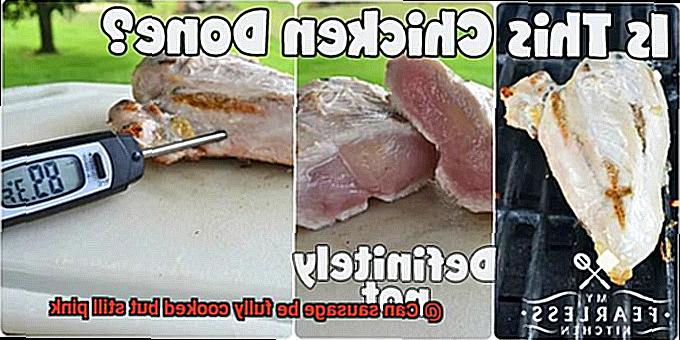
When inserting the meat thermometer into the sausage, make sure it is inserted into the thickest part of the meat and doesn’t touch any bone or gristle. This will give you an accurate reading of the temperature inside the sausage.
Safe Internal Temperature Levels
The USDA recommends cooking all types of sausage, including pork, beef, chicken, and turkey, to an internal temperature of 160°F (71°C) for safety reasons. Make sure that your meat thermometer reads at least 160°F (71°C) before considering the sausage fully cooked and safe to eat.
Understanding Pink Sausage
Some types of sausage may appear pink or reddish in color even when fully cooked. This coloration can be due to the use of curing agents like nitrates or nitrites, which help preserve the meat and give it a distinctive flavor. However, if you are unsure whether or not your particular type of sausage should be pink, it’s always better to use a meat thermometer to ensure that it is fully cooked.
Smoked Sausages and their Color
Smoked sausages can range from a light pink to a deep mahogany brown, and some even have a reddish tint. However, the color is not an accurate indicator of doneness.
The crucial factor to consider is the internal temperature. According to the USDA, all pork sausages must be cooked to an internal temperature of 160°F, while beef sausages should be cooked to 165°F. So, even if your sausage looks perfectly cooked on the outside, it could still be undercooked on the inside.
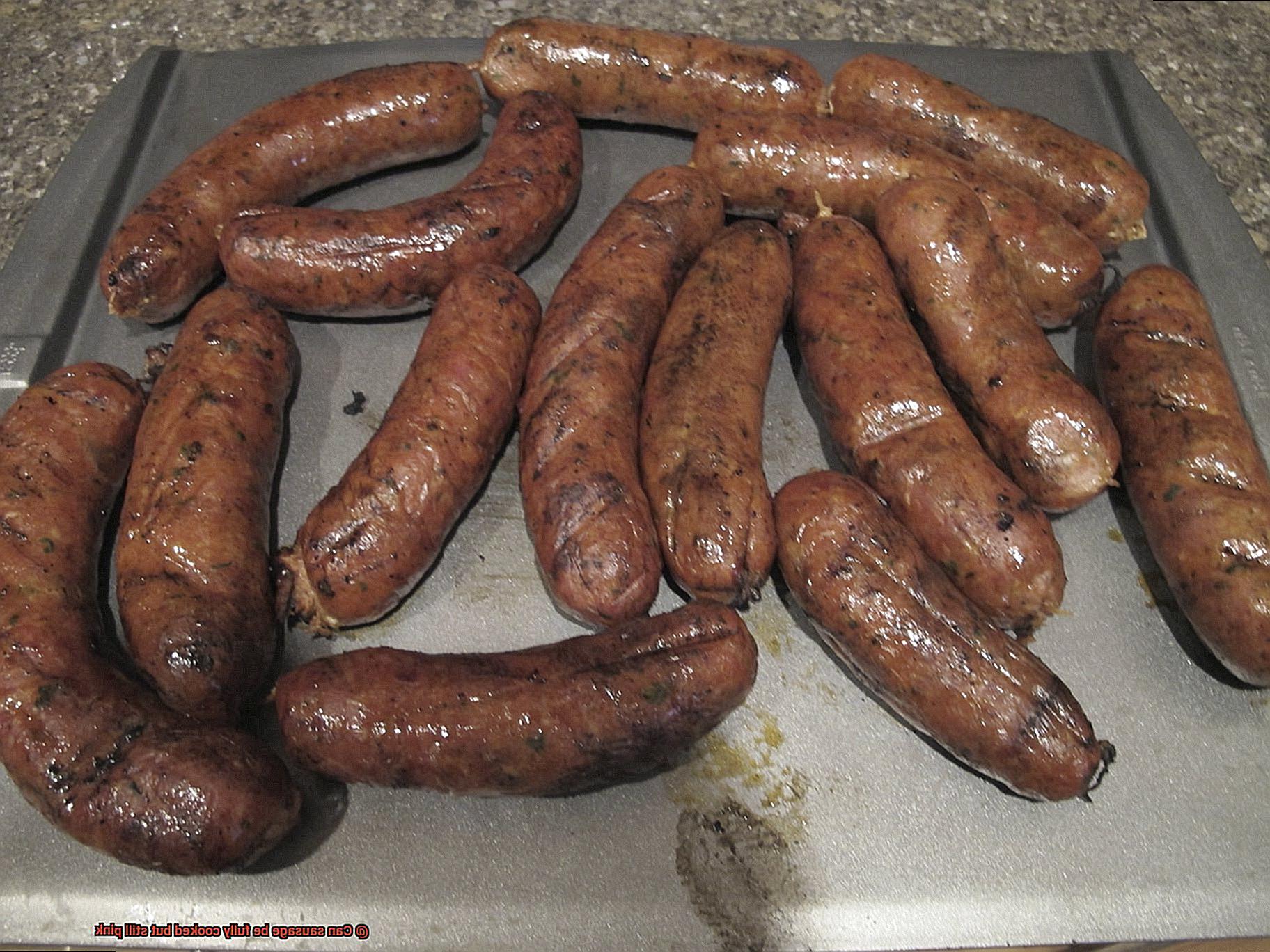
Moreover, smoking can cause a “smoke ring,” a pink discoloration just under the surface of the sausage. While it may appear like an indication of doneness, it’s not reliable. The smoke ring is caused by a chemical reaction between the smoke and myoglobin in the meat and doesn’t necessarily mean that the sausage is fully cooked.
So, how can you ensure your smoked sausages are safe to eat? The best way is to use a meat thermometer. Insert it into the center of the sausage, avoiding any bone or gristle, and wait for the reading to stabilize. Once it reaches the recommended internal temperature, you’re good to go.
Remember that even if your sausage is fully cooked, it may still have a pink hue due to smoking or other factors. As long as it has reached the recommended temperature, it’s safe to consume. So indulge in those perfectly cooked and delicious smoked sausages with confidence.
Other Factors that Affect the Color of Cooked Sausage
It’s not just about reaching the recommended internal temperature, although that is crucial too. Let’s explore some other factors that can impact the appearance of your beloved sausages.
Firstly, the type of meat used in the sausage can play a significant role. If your sausage is made with beef or pork, expect a darker color when fully cooked compared to those made with chicken or turkey. But don’t fret, as long as it’s cooked to perfection, it’s safe to eat regardless of color.
Next up, let’s talk about cooking methods. Grilling can give your sausages a beautiful charred exterior while leaving the interior slightly pink. Boiling or steaming, on the other hand, may result in a uniform pink color throughout. It all comes down to personal preference and cooking style.
The ingredients used in your sausage can also contribute to its color. Certain spices like paprika or cumin can give your sausage a reddish hue, even when fully cooked. Additionally, fillers and additives can impact the appearance of your sausage.
Lastly, keep in mind the cooking temperature. If the heat is too high or too low during cooking, this can affect its color. That’s why it’s crucial to use a meat thermometer and ensure that your sausage reaches an internal temperature of 160°F (71°C) before indulging.
Tips for Cooking Sausage Thoroughly
Here are some essential tips for cooking sausage thoroughly, ensuring that it’s both safe and mouthwateringly flavorful.
Cook on Low Heat
One of the most important tricks to cooking sausage properly is to avoid high heat. If the temperature is too high, the outside of the sausage will cook faster than the inside, resulting in an undercooked center. To prevent this, keep your heat on medium and turn your sausage frequently to ensure even cooking.
Use a Meat Thermometer
To determine if your sausage is fully cooked, use a meat thermometer. For pork sausage, the internal temperature should reach 160°F (71°C), while chicken or turkey sausage should reach 165°F (74°C). Insert the thermometer into the thickest part of the sausage, avoiding any bone or gristle that could give a false reading.
Avoid Piercing
While it may be tempting to pierce your sausage while cooking, resist the urge. Piercing or cutting into your sausage will cause juices to escape, resulting in a dry and less flavorful final product. Instead, flip your sausage gently with tongs or a spatula.
Add Liquid
To keep your sausage moist and juicy, add some liquid to your pan while cooking. Water, broth, beer, or any other liquid of your choice can be used to prevent burning and sticking of the sausage to the pan.
Let it Rest
Once your sausage is fully cooked, let it rest for a few minutes before slicing or serving. This will allow the juices to redistribute throughout the sausage, resulting in a juicy and delicious final product.
The Risks of Undercooked Sausage
The seemingly harmless act of biting into an undercooked sausage can unleash a world of hurt. Undercooked sausages may harbor harmful bacteria such as Salmonella, Listeria, E. coli, and Campylobacter, which can cause severe food poisoning. Symptoms of food poisoning may range from vomiting, diarrhea to abdominal pain, fever, and in extreme cases, death.
Cooking sausages properly is the key to avoiding these risks. Ensure your sausages are cooked at the right temperature and for the right duration. It is recommended that the internal temperature of the sausage should reach 160°F (71°C) to kill off any bacteria present. Don’t second-guess your cooking skills; use a meat thermometer to check the temperature.
Apart from cooking your sausages correctly, you should also take precautions to avoid cross-contamination. Using separate utensils for raw and cooked sausages and washing your hands thoroughly before handling food is critical.
In summary, undercooked sausages pose a significant health risk that should not be taken lightly. To safeguard yourself and your family from food poisoning, ensure that your sausages are cooked thoroughly at the correct temperature. Use a meat thermometer if necessary and take appropriate precautions to avoid cross-contamination.
fJIDHq5rBiA” >
Conclusion
After a thorough exploration of the question, it’s clear that fully cooked sausages can still retain their pink color. The reasons for this phenomenon include curing agents, leaner meat cuts, and cooking methods. However, it’s essential to note that not all pink sausages are safe to eat. To ensure safety, using a meat thermometer is crucial to check the internal temperature of the sausage has reached 160°F or 165°F for poultry sausage.
Various factors affect the color of cooked sausages, such as meat type, cooking techniques, ingredients used, and cooking temperature. For optimal results when cooking sausages safely, cook them on low heat without piercing or cutting into them while they cook. Adding liquid for moisture retention and letting them rest before slicing or serving will also help achieve perfectly cooked sausages.
The risks of consuming undercooked sausages cannot be overstated as they may harbor harmful bacteria like Salmonella and E.coli that can cause severe food poisoning. Therefore, taking appropriate precautions such as using separate utensils for raw and cooked sausages and washing hands thoroughly before handling food is critical in avoiding cross-contamination.
In conclusion, with proper knowledge about cooking techniques and food safety guidelines like using a meat thermometer to check internal temperatures and taking precautions against cross-contamination while handling food items like sausages will ensure that you enjoy your delicious meal without any worries.





